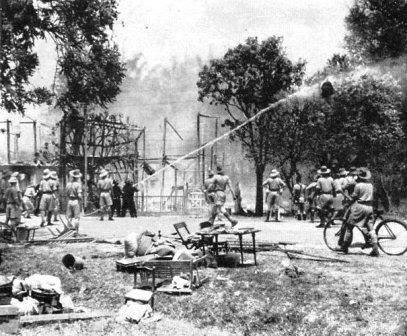
May 1942
The Capture of Mandalay
room Myanmar
people Iida Shojiro
On the night of 3 April 1942, Japanese Mitsubishi bombers attacked the old royal city with incendiary bombs, creating a gigantic firestorm. Two-thirds of all the buildings in Mandalay were destroyed. It is estimated that up to 8,000 people may have died and many more were injured (out of a population of about 150,000). Blackened and rotting corpses filled the moat around Mandalay Palace. Everywhere in the searing hot-season heat was the smell of death. The city emptied.
Clare Booth Luce, wife of Time and Life magazine publisher Henry Luce was there at the time and could see nothing but dead bodies and ruined buildings. She wrote, “Tonight, there is no Mandalay.”
The Japanese 15th Army was approaching from Prome. Chinese Nationalist armies, the “Chinese Expeditionary Force (Burma)” had been defeated at Toungoo (on 3 March) and would soon be forced from Lashio (on 29 April). British and Indian forces were retreating towards Maymyo and Myitkyina to cross into Assam in India.
The Japanese invasion of Burma had begun in December of 1941 with the Christmas eve bombing of Rangoon and Rangoon fell on 8 March 1942. On 30 March, the Japanese took Toungoo from the Chinese Expeditionary Force (Burma) under the command of General Luo Zhuoying and then Prome from the British-led Burma Corps under General Harold Alexander.
Allied forces attempted to make a stand at Mandalay but, in the first week of May 1942, the Japanese 15th Army under Lt. General Shojiro Iida captured the city.
The photograph shows Burmese firefighters and Burma Army soldiers attempting to put out fires the morning of 4 April in Mandalay town, after a night of aerial bombing by Japanese forces.